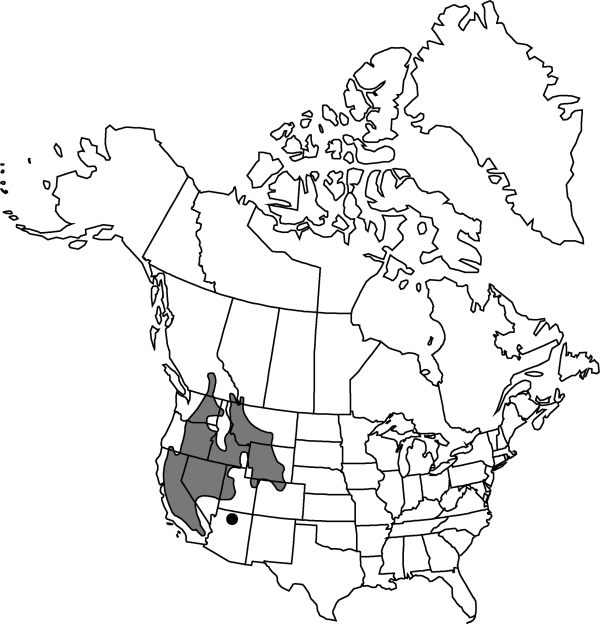Difference between revisions of "Lewisia rediviva"
Fl. Amer. Sept. 2: 368. 1814.
FNA>Volume Importer |
RevisionBot (talk | contribs) m (Bot: Adding category Revised Since Print) |
||
| (5 intermediate revisions by 3 users not shown) | |||
| Line 8: | Line 8: | ||
}} | }} | ||
|common_names=Bitterroot | |common_names=Bitterroot | ||
| + | |special_status={{Treatment/ID/Special_status | ||
| + | |code=F | ||
| + | |label=Illustrated | ||
| + | }}{{Treatment/ID/Special_status | ||
| + | |code=E | ||
| + | |label=Endemic | ||
| + | }} | ||
|basionyms= | |basionyms= | ||
|synonyms= | |synonyms= | ||
| Line 20: | Line 27: | ||
-->{{Treatment/Body | -->{{Treatment/Body | ||
| − | |distribution= | + | |distribution=Alta.;B.C.;Ariz.;Calif.;Colo.;Idaho;Mont.;Nev.;Oreg.;Utah;Wash.;Wyo. |
|discussion=<p>Varieties 2 (2 in the flora).</p><!-- | |discussion=<p>Varieties 2 (2 in the flora).</p><!-- | ||
--><p>Native Americans commonly ate the boiled roots of <i>Lewisia rediviva</i>.</p> | --><p>Native Americans commonly ate the boiled roots of <i>Lewisia rediviva</i>.</p> | ||
| Line 45: | Line 52: | ||
-->{{#Taxon: | -->{{#Taxon: | ||
name=Lewisia rediviva | name=Lewisia rediviva | ||
| − | |||
|authority=Pursh | |authority=Pursh | ||
|rank=species | |rank=species | ||
| Line 52: | Line 58: | ||
|basionyms= | |basionyms= | ||
|family=Portulacaceae | |family=Portulacaceae | ||
| − | |distribution= | + | |distribution=Alta.;B.C.;Ariz.;Calif.;Colo.;Idaho;Mont.;Nev.;Oreg.;Utah;Wash.;Wyo. |
|reference=None | |reference=None | ||
|publication title=Fl. Amer. Sept. | |publication title=Fl. Amer. Sept. | ||
|publication year=1814 | |publication year=1814 | ||
| − | |special status= | + | |special status=Illustrated;Endemic |
| − | |source xml=https:// | + | |source xml=https://bitbucket.org/aafc-mbb/fna-data-curation/src/2e0870ddd59836b60bcf96646a41e87ea5a5943a/coarse_grained_fna_xml/V4/V4_979.xml |
|genus=Lewisia | |genus=Lewisia | ||
|species=Lewisia rediviva | |species=Lewisia rediviva | ||
}}<!-- | }}<!-- | ||
| − | -->[[Category:Treatment]][[Category:Lewisia]] | + | --> |
| + | |||
| + | [[Category:Treatment]] | ||
| + | [[Category:Lewisia]] | ||
| + | [[Category:Revised Since Print]] | ||
Latest revision as of 17:03, 6 November 2020
Taproots gradually ramified distally. Stems procumbent to erect, 1–3 cm. Leaves: basal leaves withering at or soon after anthesis, sessile, blade linear to clavate, subterete or grooved adaxially, 0.5–5 cm, margins entire, apex obtuse to subacute; cauline leaves absent. Inflorescences with flowers borne singly; bracts 4–7(–8), whorled, subulate to linear-lanceolate, 4–10 mm, margins entire, apex acuminate. Flowers pedicellate, disarticulate in fruit; sepals (4–)6–9, broadly elliptic to ovate, 10–25 mm, scarious after anthesis, margins entire to somewhat erose, apex obtuse to rounded; petals 10–19, usually rose to pink, sometimes lavender, sometimes with paler or white centers, or wholly white, elliptic, oblong, or narrowly oblanceolate, 15–35 mm; stamens 20–50; stigmas 4–9; pedicel (1–)3–15(–30) mm. Capsules 5–6 mm. Seeds 6–25, 2–2.5 mm, shiny, minutely papillate. 2n = 26, 28.
Distribution

Alta., B.C., Ariz., Calif., Colo., Idaho, Mont., Nev., Oreg., Utah, Wash., Wyo.
Discussion
Varieties 2 (2 in the flora).
Native Americans commonly ate the boiled roots of Lewisia rediviva.
Selected References
None.
Key
| 1 | Basal leaf blades clavate to narrowly oblanceolate, grooved adaxially; sepals 10-12(-15) mm; petals 15mm; stamens 20-30 | Lewisia rediviva var. minor |
| 1 | Basal leaf blades linear, subterete, not grooved adaxially; sepals 15-25 mm; petals 18-35 mm; stamens 30-50 | Lewisia rediviva var. rediviva |